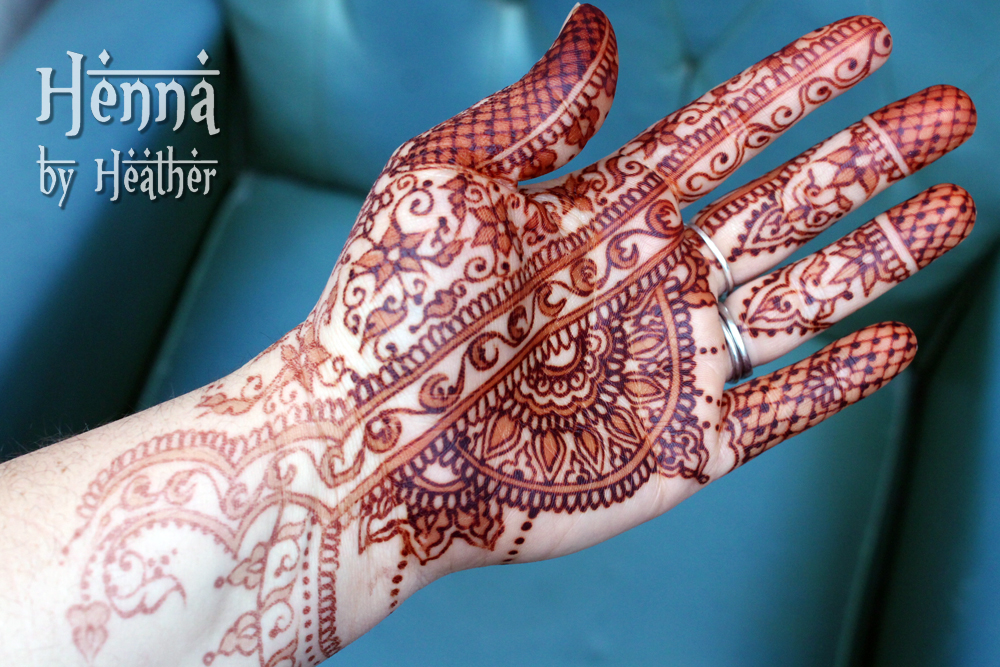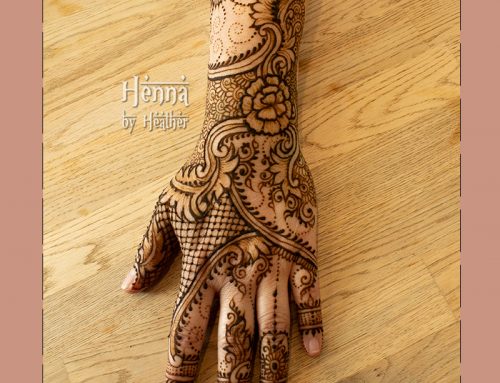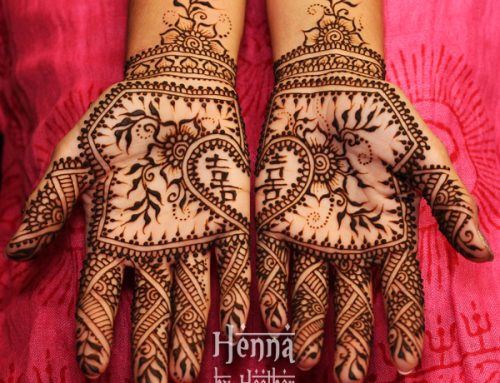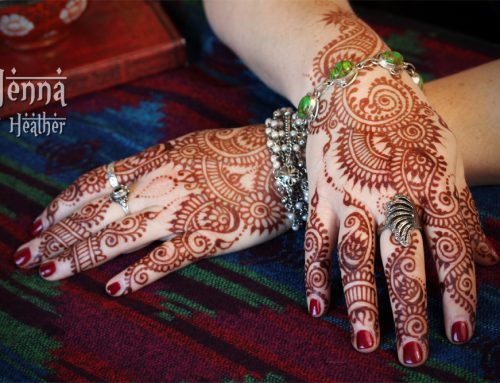Project Description
This Indo-Persian henna design was inspired by my fellow henna artist and friend Alia Khan, who lives in Saudi Arabia. This is from her design book Gulmohar, which features 20 pages of designs that combine the dense intricacy of Indian mehndi designs with the attention to balance, flow, and openness of Persian henna designs.
Watch this design being done, and then please head over to YouTube to subscribe to my channel 🙂
The design also features two-toning, which is the process of doing two different stages of henna application to achieve two different tones. This particular two-tone process involved doing the main design first, letting the stain mature, and then filling in some areas with color and leaving the henna on for just two minutes and then washing off with water. Typically washing henna off with water is a no-no, but you want to stop oxidation as much as possible, so the second application of henna stays a nice light orange, for maximum contrast. Applying thick lotions and creams is also a counter-to-everything-else-you’ve-heard-about-henna-aftercare method that you can use to purposefully stop oxidation
This method is practical if you have someone around who you are confident can color in solid blocks of color with henna once a design is laid down for them (it’s harder than it looks – henna is a bit of an unruly substance), or you can bring your henna artist back for a second round of application on your big day.
The design would also look quite nice with just one round of application, rather than two-toned. Shading and variation in line thickness could be added to give it some dimensionality without going to the crazy lengths involved for two-toning the design.
Fun fact: The two-tone was started on the thumb, and then last applied to the pinky. It was only left on about 30 seconds after the pinky was done. Leaving it on longer than that, and the color on the thumb would be too dark!





